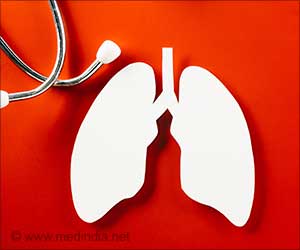Don't let pollution weigh down your breath. Discover yoga practices and indoor tips to strengthen your lungs and breathe easy, even in the city.

- Yoga breathing exercises like Bhastrika and Nadishodhan can cleanse your lungs, increasing resilience against air pollution
- Improving indoor air quality with purifying plants and air purifiers can significantly reduce the impact of city pollution on your health
- Simple yoga poses like Bhujangasana and Ustrasana can enhance lung capacity, helping you breathe better in polluted environments
Practicing Bhastrika Pranayama can increase your lung capacity by up to 15%! This ancient breathing technique boosts your energy and cleanses your lungs. #breathebetter #yogaforhealth #medindia’
Protecting Our Health Amid Air Pollution
So, how do we protect ourselves when the air quality plummets? While we cannot eliminate pollution immediately, we can strengthen our lungs and increase our resilience- and yoga can help.With a few mindful techniques, you can transform your breathing from a struggle to a source of strength. However, the first step is to establish a better home atmosphere.
Top 3 Ways to Improve Indoor Air Quality
Air-purifying plants:
Incorporate Snake Plant, Aloe Vera, and Peace Lily into your living space. They require minimal maintenance but effectively filter interior air (1✔ ✔Trusted Source
Effects of indoor plants on air quality: a systematic review
Go to source).Invest in air purifiers:
High-quality air purifiers can considerably reduce indoor air pollution (2✔ ✔Trusted Source
Enhancing indoor air quality -The air filter advantage
Go to source).Clean regularly:
Dust and allergens can accumulate indoors, so keeping your home clean can help you avoid respiratory problems.
Yogasanas and Breathing Exercises to Overcome the Negative Impact of Poor Air Quality
Incorporating yoga asanas and breathing exercises into your daily practice can assist your body overcome the impacts of poor air quality. These practices not only cleanse your lungs but also boost their capacity and resistance.Bhastrika Pranayama:
Want to increase your energy and lung power? Bellows Breathe is your go-to. Short, powerful breaths stimulate the respiratory system. In just a few minutes, you will be recharged.Nadishodhan Pranayama:
This relaxing technique regulates the nervous system and cleanses the respiratory passageways. Sit comfortably and alternate nostril closures with your thumb and ring finger, inhaling through one and expelling through the other.Bhujangasana:
This position expands the chest and develops the back muscles. Lie on your stomach, palms beneath your shoulders, and raise your chest as you inhale. Hold the position for 15 to 20 seconds before releasing.Ustrasana:
It is a backward-bending pose that enhances lung capacity and posture. Kneel with your legs hip-width apart, put your hands on your heels, and gradually arch your back while inhaling deeply. Hold for 10-15 seconds and exhale as you let go.Shitali Pranayama:
Roll your tongue like a tube, inhale deeply, and expel through the nose. This approach cools the body and relaxes the respiratory system, which is especially useful on hot days.
So, take your first deep, conscious breath and live fully.
References:
- Effects of indoor plants on air quality: a systematic review - (https://pubmed.ncbi.nlm.nih.gov/32170619/)
- Enhancing indoor air quality -The air filter advantage - (https://pubmed.ncbi.nlm.nih.gov/26628762/)
Source-Medindia















